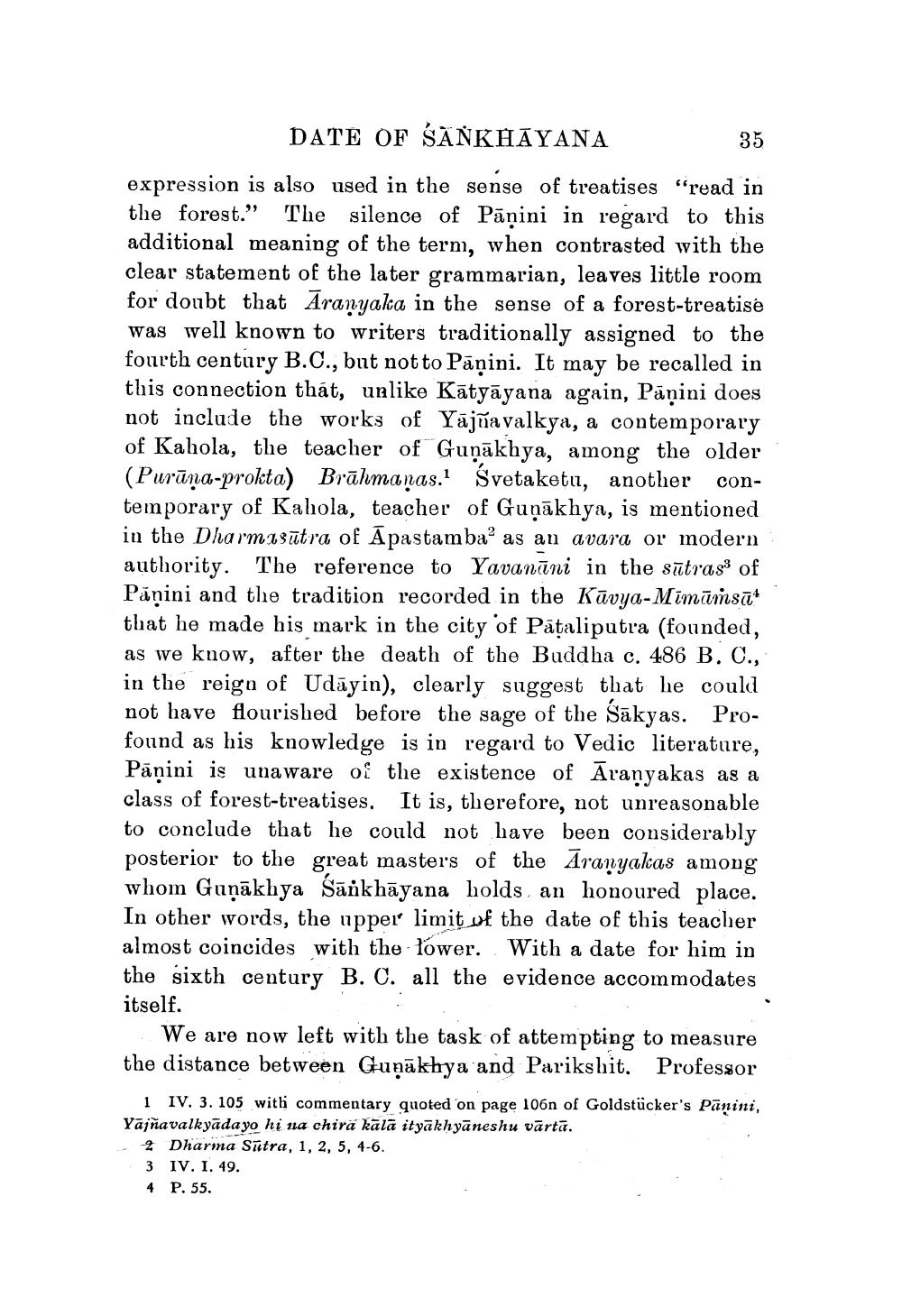________________
DATE OF SANKHĀYANA
35 expression is also used in the sense of treatises "read in the forest." The silence of Pāṇini in regard to this additional meaning of the term, when contrasted with the clear statement of the later grammarian, leaves little room for doubt that Aranyaka in the sense of a forest-treatise was well known to writers traditionally assigned to the fourth century B.C., but not to Pāṇini. It may be recalled in this connection that, unlike Kātyāyana again, Pāṇini does not include the works of Yājñavalkya, a contemporary of Kahola, the teacher of Guņākhya, among the older (Purūna-prokta) Brāhmaṇas. Svetaketu, another contemporary of Kahola, teacher of Guņākhya, is mentioned in the Dharmzsūtra of Āpastamba' as an avara or modern authority. The reference to Yavanāni in the sūtrass of Pånini and the tradition recorded in the Kāvya-Mimārsūt that he made his mark in the city of Pāțaliputra (founded, as we know, after the death of the Buddha c. 486 B. C., in the reign of Udāyin), clearly suggest that he could not have flourished before the sage of the Sākyas. Profound as his knowledge is in regard to Vedic literature, Pāṇini is unaware of the existence of Āranyakas as a class of forest-treatises. It is, therefore, not unreasonable to conclude that he could not have been considerably posterior to the great masters of the Aranyakas among whom Guņākhya Sankhāyana holds an honoured place. In other words, the upper limit of the date of this teacher almost coincides with the tower. With a date for him in the sixth century B. C. all the evidence accommodates itself.
We are now left with the task of attempting to measure the distance between Guņākhya and Parikshit. Professor
1 IV. 3. 105 with commentary quoted on page 106n of Goldstücker's Panini, Yajňavalkyādayo hi na chira kālā ityākhyāneshu vārtā.
2 Dharma Sutra, 1, 2, 5, 4-6. 3 IV. I. 49. 4 P. 55.




